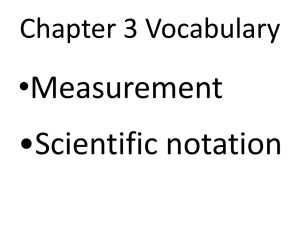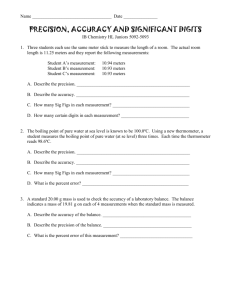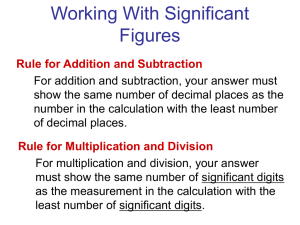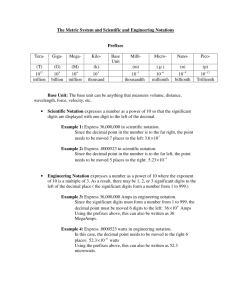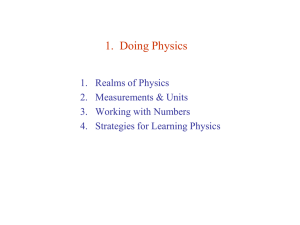Units, Precision, and Scientific Notation Practice Sheet
advertisement
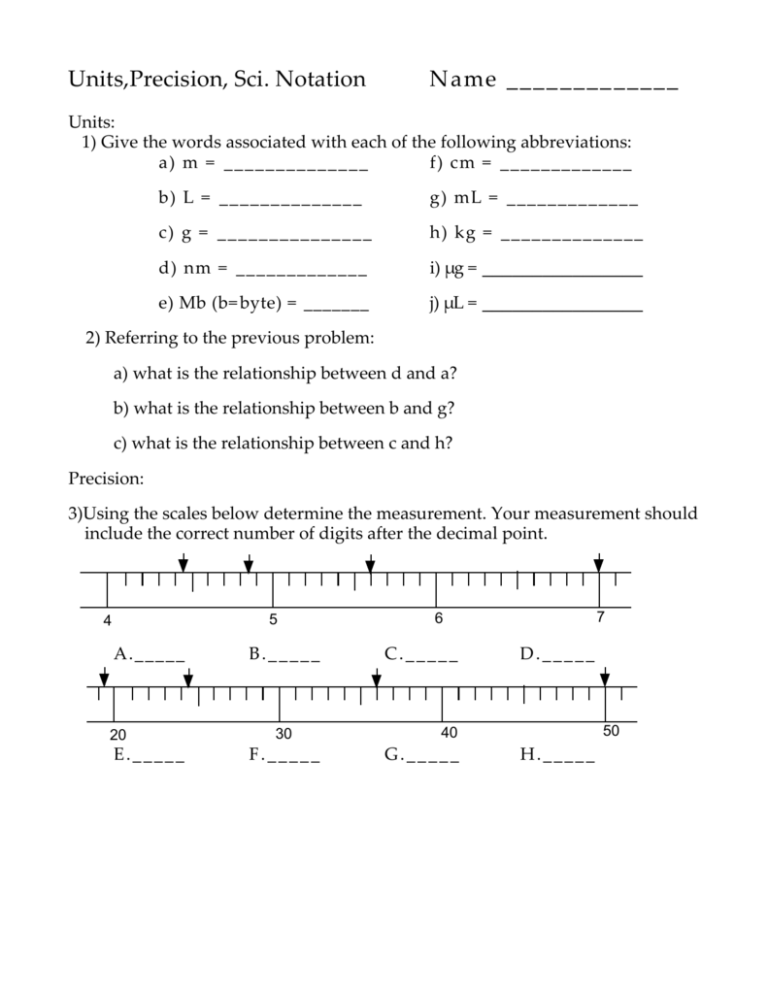
Units,Precision, Sci. Notation Name _____________ Units: 1) Give the words associated with each of the following abbreviations: a) m = ______________ f) cm = _____________ b) L = ______________ g) mL = _____________ c) g = _______________ h) kg = ______________ d) nm = _____________ i) µg = ________________ e) Mb (b=byte) = _______ j) µL = ________________ 2) Referring to the previous problem: a) what is the relationship between d and a? b) what is the relationship between b and g? c) what is the relationship between c and h? Precision: 3)Using the scales below determine the measurement. Your measurement should include the correct number of digits after the decimal point. 5 4 A._____ 20 E._____ B._____ 30 F._____ 7 6 C._____ D._____ 50 40 G._____ H._____ 5)If a measurement is reported as 8 cm, that indicates the person taking the measurement knew the thing they were measuring was greater then 7cm and less than 9 cm. A measurement of 8 cm has an implied range of 7 - 9 cm. If this same measurement was reported as 8.11 cm, it's implied range would be from 8.10 - 8.12 cm. Which is more precise? Explain the meaning of precision. 6) What is the implied range of each of the following numbers: a) 14 g b) 3.00 cm c) 50.146 ml 7) Is there a difference between recording a measurement of something as 5 cm vs. 5.0 cm? Explain. Scientific Notation: 8) Convert the following to “normal” decimal numbers: a) 1.467 x 10-4 e) 4.301 e-6 b) 3.2 x 105 f) 9.00 e+8 c) 3.200 x 105 g) 1.10 e-4 h) 8.1 e-1 d) 6.100 x 10-2 9) How many significant digits are in each of the above numbers? 10) Convert the following to scientific notation: a) 0.0053 e) 205000000 (with 3 sig. dig.) b) 0.00530 f) 205000000 (with 5 sig. dig.) c) 4301689 g) 4300 (with 2 sig. dig.) d) 0.88000 h) 0.0000000150 11) How many significant digits are in each of the above numbers?
